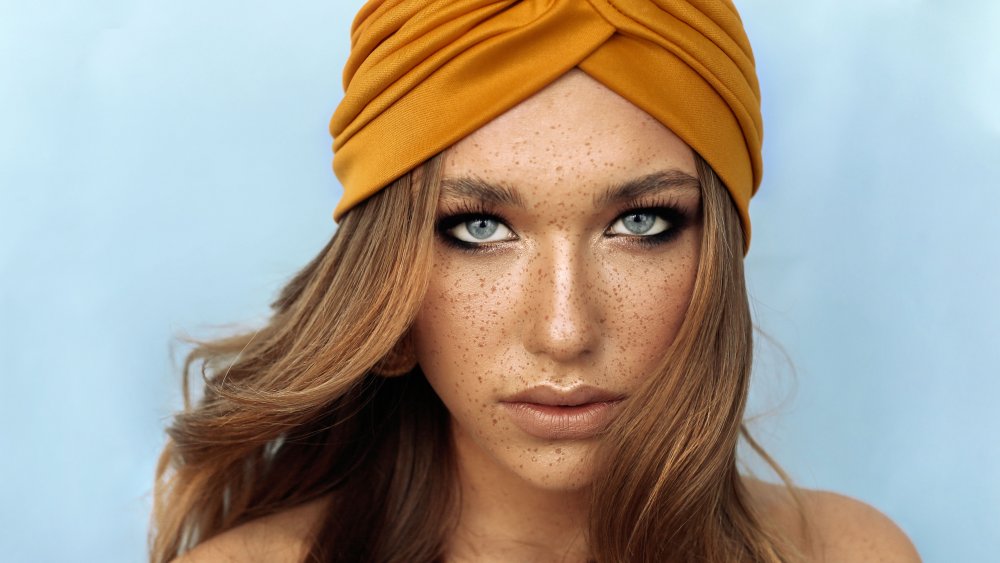Signs Your Freckles Need To Be Checked Out By A Doctor
If you have a love/hate relationship with your freckles, it may be time to change your thinking. After all, they call them beauty marks for a reason — and some women are even drawing on fake freckles. But what causes these spots, and do you ever need to be concerned?
First, freckles are a combination of sunlight and the number of skin cells or melanocytes with which you are born. Folks with darker skin may have more melanocytes than people with lighter skin, but people with lighter skin tones are the ones who are more prone to having freckles. That's because their melanocytes are scattered across the body. When these cells are exposed to sunlight, they produce melanin, which appears on skin as freckles. So, while the freckles we notice most may be on our faces, they can also be found on other parts of our body, like the chest, arms, legs, and hands (via Insider).
The good news: Freckles are generally harmless. "While freckles do not represent an underlying disease and can get darker even with small amounts of UV light exposure, it's important to notice if your freckles are getting darker," dermatologist Joshua Zeichner tells Byrdie. "This tells you that you're getting a good amount of sun exposure and should remind you to wear your sunscreen."
Check your freckles for these changes
If you're the type of person that freckles easily, it's important to cover up and use sunscreen with at least 30 SPF. And this is important, because as Molemap points out, those who freckle are also more prone to developing skin cancer, because lighter skins lack the melanin humans need to protect against sun exposure and subsequent ultraviolet radiation.
While freckles are harmless in and of themselves, you need to monitor them in order for them to make sure they stay that way. Like moles, if you spot any freckles which might show that they are not asymmetrical, that their borders have changed, that they have changed colors, that they are bigger than a quarter of an inch, or if they might have changed in any other way, it may be time to go see your doctor (via Healthline).
"Freckles should not change dramatically in size or shape or appearance, nor should they become symptomatic. If one has a brown spot that is changing, it is best to have this evaluated by a dermatologist to ensure that it is not an abnormal mole, skin cancer or other type of growth," dermatologist Nada Elbuluk tells Insider.

